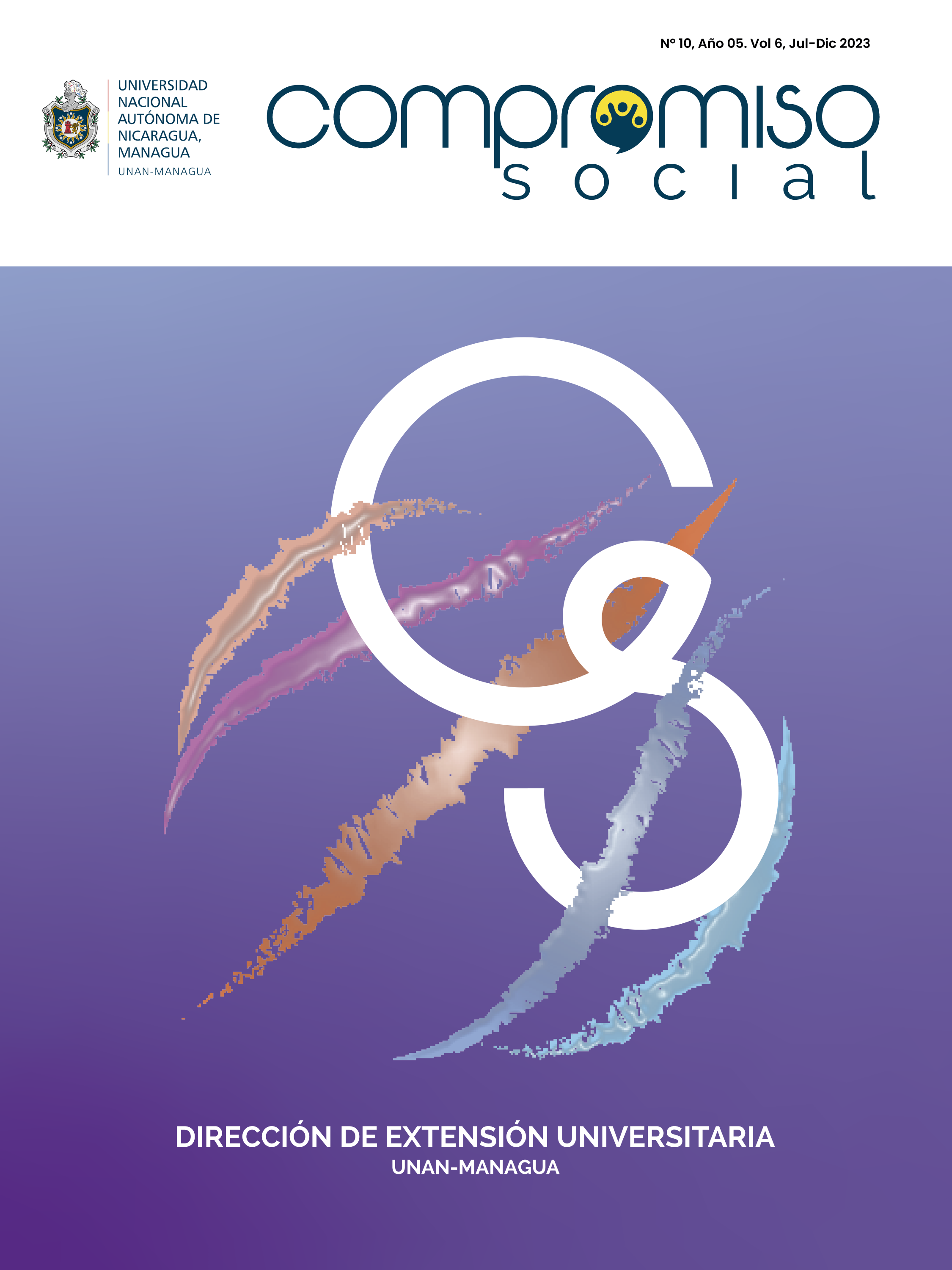Sociodemographic characteristics associated with the quality of life of the Elderly of the UNAN-Managua
DOI:
https://doi.org/10.5377/recoso.v8i10.18558Keywords:
Older adults, sociodemographic characteristics, quality of lifeAbstract
The purpose of this research was to describe the sociodemographic characteristics as an indicator of the quality of life of the elderly in UNAN – Managua. The design was descriptive, cross-sectional. For this, the WHO instrument to measure quality of life and sociodemographic questionnaire were applied. According to sociodemographic characteristics, the older adult population was 56% male and 44% female, aged 60 to 78 years and older, with the most representative age group being 60 to 65 years old with 73%. 98% are from the urban area. 66% of older adults have a higher level of education. The predominant marital status is married with 57%. 37% of the population surveyed considered that their quality of life was "Pretty good"; 29% rated it as "Normal", the category of "Very good" was chosen by 27% of older adults surveyed, and "Fair", in which 7% of people considered their quality of life. Only 13% of the people surveyed belong to the subsidized regime. To evaluate the statistical relationship of the variables marital status and educational level with the qualification of their Quality of Life, consistency analysis, Pearson's Chi Square statistical test, were used, we concluded that there is dependency relationship between quality of life rating and marital status (α < 0.05). In conclusion, the results of this study support the alternative hypothesis proposed, demonstrating a significant association between educational level and quality of life in older adults at the National Autonomous University of Nicaragua, considering that the educational level is a relevant factor in the evaluation and promotion of well-being in older adults.
955
References
Badia, X., y Alonso, J. (2007). Medidas Generales de Calidad de Vida Relacionada con la Salud. La medida de la salud. guía de escala de medición en español. (pp.131-209). Barcelona: EDITTEC.
Cardona, J. A., y Higuita, L.F. (2014). Aplicaciones de un Instrumento diseñado por la OMS para la evaluación de la Calidad de Vida. Revista Cubana de Salud Pública, 40 (2), 175-189.
Castillo-Guzmán A, A.-M. C.-R.-A.-C. (2008). Calidad de vida relacionada con la salud en personas con enfermedades crónicas degenerativas. Revista Cubana de Investigaciones Biomédicas.
Chen, Y. H. (2020). The association between marital status and quality of life in adults: A systematic review. Journal of Nursing Scholarship, 52(1), 98-108. https://doi.org/DOI: 10.1111/jnu.12514
Doris Judith López, A. A. (2022). Evaluación de la Calidad de Vida en el Adulto Mayor. Jacaleapa, Honduras. Gálvez, J. R. (2019). Factores que inciden en la calidad de vida del jubilado. Revista Torreón.
Giusti, L. (1991). Calidad de vida, estrés y bienestar. San Juan, Puerto Rico: Editorial Psicoeducativa.
INIDE. (2015). Anuario Estadístico 2015. Managua: INIDE.
Loredo-Figueroa M.T., G.-T. R.-M.-V.-L. (2016). Nivel de dependencia, autocuidado y calidad de vida del adulto mayor. Enferm.Univ. [Revista en Internet].
Liang, Y. L. (2020). The impact of education on health-related quality of life among Chinese elderly.PLoS One, e0228791., 15(2). https://doi.org/ DOI: 10.1371/journal.pone.0228791
Mezadri, T. G. (2016). Calidad de vida y actividad física en personas de la tercera edad con apoyo de la Estrategia de Salud Familiar en Itajai, SC, Brasil. Revista Brasileira de Atividade Fisica&Saude.
OMS. (2022). Envejecimiento y Salud. OMS.
Smith, A. B. (2018). Marital status and quality of life: A longitudinal analysis of older adults in the United States. Journal of Applied Gerontology, 37(6), 679-699. https://doi.org/DOI: 10.1177/0733464816670393
Salud, O. M. (2021, 10 1). Envejecimiento y Salud. https://www.who.int/es/news-room/fact-sheets/detail/ageing-and-healthPág. 73-84Características sociodemográficas asociada a la calidad de vida del Adulto Mayor de la UNAN-Managua




